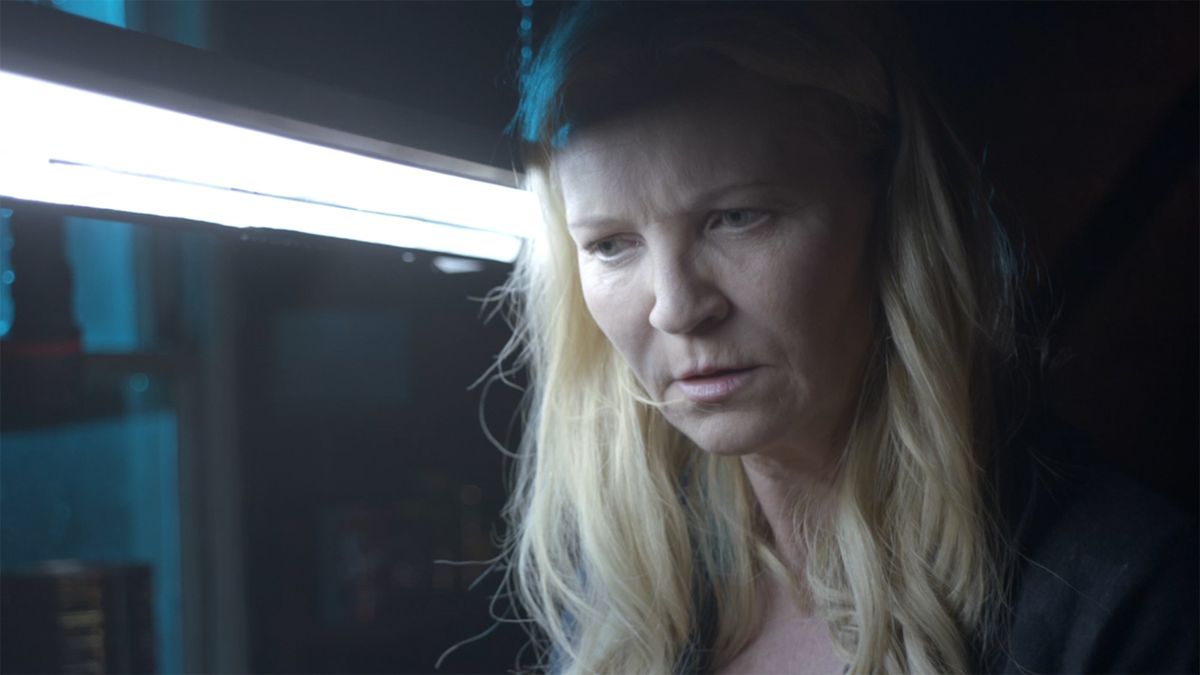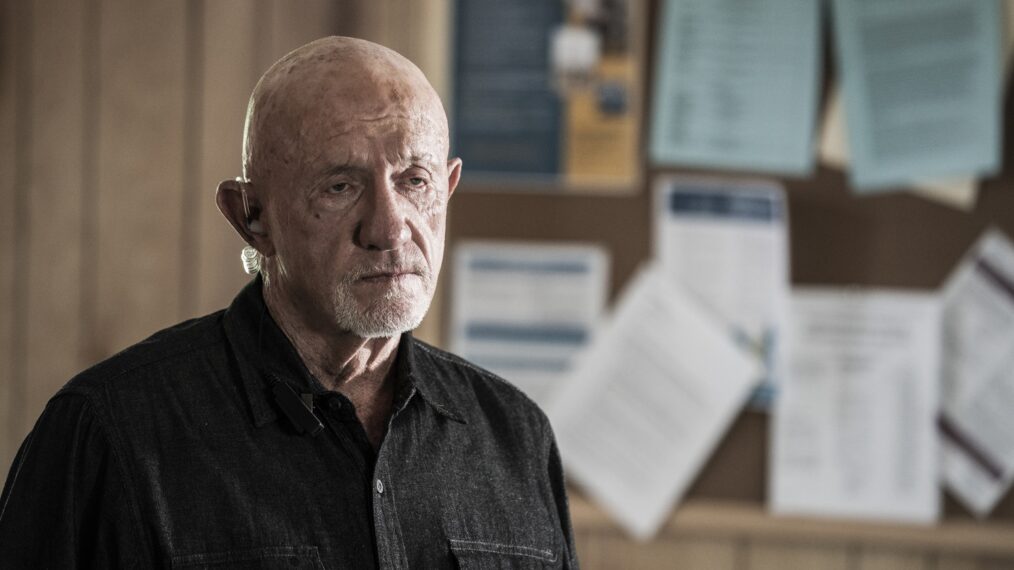
Stephen King’s efforts to adapt his own works for film and television have very much ebbed and flowed over the course of his career. His most active period was during the 1980s, as while his screenplays for big screen projects including Cujo and Children Of The Corn were rejected, he successfully penned films including George Romero’s Creepshow, Lewis Teague’s Cat’s Eye, Dan Attias’ Silver Bullet, Mary Lambert’s Pet Sematary, and, of course, his directorial debut, Maximum Overdrive.
After 1989, both King’s output and medium of choice evolved. After seeing the success of Tommy Lee Wallace’s IT, he understood the immense potential that existed in bringing his expansive books to live-action via the small screen, and between the early 1990s and 2006 that was his focus as a screenwriter. In addition to personally developing TV projects like Golden Years, Rose Red, and Storm Of The Century, he also penned adaptations of The Stand, The Shining, and Desperation (all of which were directed by Mick Garris).
When one does the math, Stephen King spent a quarter-century away from translating his own shorts, novellas, and books as features for theaters – but that drought ended when he partnered with director Peter Askin for the development of A Good Marriage.
As King explained to Entertainment Weekly back in 2014, the author first met Askin when he was in the process of challenging himself with working in a new field – namely making his first musical. Along with artists John Mellencamp and T Bone Burnett, he worked on a touring stage production called Ghost Brothers of Darkland County, and the trio realized during the process that they could use the help of someone with expertise in the genre. Enter Askin:
We didn’t know anything about musicals and Peter [Askin], who has directed Hedwig and the Angry Inch, came on board for the workshop. I bonded with him and at some point I said, ‘Would you like to do a movie with me?’ I had something in mind. So we worked on it and finally we both knew [we had something]. We went in fearlessly and this is what we came up with.
Based on the novella of the same name from the 2010 collection Full Dark, No Stars, A Good Marriage boasts an impressive ensemble (including Joan Allen, Anthony LaPaglia, and Stephen Lang) and it tells an interesting story with dark and complicated questions… but it’s also a thriller that never fails to raise your heartbeat above 90. The history of the source material and the light controversy surrounding the 2014 film is arguably more fascinating than the film itself – and the explanation as to why is at the center of this week’s Adapting Stephen King.
(Image credit: Screen Media Films)
What “A Good Marriage” Is About
Stephen King has spent decades terrifying Constant Readers with villains and mayhem conjured from his own imagination, but “A Good Marriage” can be called a deviation. The story and the characters are fiction, but the novella itself is heavily inspired by a true monster from the real world.
In 1974, reports came out of Wichita, Kansas that four members of a family had been brutally murdered by an unknown assailant, and it turned out to be the first work of a dangerous serial killer. Between the mid-1970s and early 1990s, police investigated a total of 10 homicides that showcased a pattern of sadistic behavior, and the criminal responsible taunted the detectives on the case with photos and letters about what he had done. Through these messages he gave himself a nickname based on his methodology: Bind, Torture, Kill a.k.a. BTK.
It wasn’t until 2005 that the police discovered that the killer’s real name was Dennis Rader – a husband and father of two children who was active in the community as the council president of his Lutheran church and a Cub Scout leader. It was determined that he kept his murderous habits a secret from everyone in his life, including his family, and at the age of 77 he is presently serving 10 consecutive life sentences at the El Dorado Correctional Facility.
Reading about the case and the family, Stephen King was fascinated by the fact that Dennis Rader was able to successfully hide such a massive part of his life from the people to whom he was closest. He writes in the afterword of Full Dark, No Stars that he trusts the word of Rader’s wife that she didn’t know that her husband was BTK, but the circumstance got his imagination spinning – specifically wondering what might have happened if she actually did make the discovery before the police did.
As first introduced in “A Good Marriage,” Darcy and Bob Anderson are a picture perfect couple, having spent 27 years together and raised two happy and successful children, but that is just an illusion that is shattered one random night when Bob is out of town visiting a client for the couple’s mail order rare coin business. While in the garage trying to find batteries for the TV remote, Darcy is shocked to find bondage pornography in a stack of catalogues. She initially dismisses it as “male exploration,” but that excuse quickly shatters like glass. Noticing a hidden compartment in the wall, she discovers a hidden oak box that contains a small stack of ID cards belonging to the latest victim of a serial killer who goes by the name “Beadie.”
Internet research and cross checking calendars confirm Darcy’s worst fears, and as a result she is left with a choice: does she turn Bob in and save Beadie’s potential future victims, or does she attempt to protect her family from the destruction that would be wrought by the revelation? It’s a powerful and horrible choice, and one that only becomes more fraught as Bob learns that his wife finally knows his awful secret.
(Image credit: Screen Media Films)
How Peter Askin’s A Good Marriage Differs From Stephen King’s Novella
Only a fool recognizes past mistakes and refuses to learn from them, and Stephen King is no fool. In the making of various feature versions of King’s books, filmmakers have squashed and stretched source material to hit what could be considered a proper runtime, and a lot of them made a number of errors along the way in so doing. So when the author began working with Peter Askin in the development of a movie, his first instinct was to choose a story that could be easily maneuvered into the new medium. King told Entertainment Weekly,
I’ve seen enough movies adapted from my work to know that the things that work the best are the things that aren’t too long and aren’t too short. Some of the stories, when they get expanded, they go in the wrong direction, and with the novels, if they’re really expansive, a lot of times it’s like sitting around a suitcase and trying to get everything in.
King cut his work in half by not only choosing a novella that was a proper length to be adapted, but one that already had a clear three act structure built into it. At the same time, however, the writer didn’t feel the need to be perfectly loyal to the source material, and did opt to include some changes. Some alterations are small – like Darcy (Joan Allen) having a sweet tooth for Tootsie Rolls instead of Butterfingers, and having Bob (Anthony LaPaglia) give his wife a pair of fish earrings that he stole from one of his victims. But some of the alterations are a lot bigger.
One change that is a bit hard to explain is that some of the gruesome horror elements of the story are excised. In the movie, Bob still explains that his homicidal tendencies come from the influence of his childhood friend, Brian Delahanty (a.k.a. B.D.), and that they had made plans before Brian’s accidental death as a teenager to try and kidnap and rape a couple of girls from their school. This is from the novella, but what isn’t mentioned in the adaptation is that the kidnapping of the girls was only a part of a larger plot that would have seen Bob and B.D. bring a collection of guns to school and murder their teachers and classmates.
A Good Marriage also doesn’t include the revelation of the worst crime committed by Beadie: the murder of a 10-year-old boy named Robert Shaverstone, who was killed after coming home early from school and witnessing Bob Anderson attacking his mother. In a note to the police after the crime, Beadie claimed that the child didn’t suffer – but Darcy discovers a horrible truth behind that lie at the end of the novella.
The biggest change made by Stephen King for the film is in the ending and the introduction of Holt Ramsay (Stephen Lang). He is still a retired investigator who has been on Bob Anderson’s tail for years, but his encounter with Darcy is totally different in the adaptation. In the novella, he comes to the Anderson house after Bob’s death as someone who already comprehends what the protagonist has been going through. Darcy doesn’t make a full confession, but there is an understanding between them before he leaves in peace.
The movie version opts to create conflict. Instead of recognizing Darcy’s innocence, Holt thinks that she and Bob were committing murders together – with their first initials, B & D, providing their serial killer handle. Holt leaves the house still believing that she is guilty, but he suffers a stroke when he gets back to his car.
Darcy goes to the hospital to try and kill Holt before he can further reveal the truth, but through conversation they end up reaching the same détente from the novella.
(Image credit: Screen Media Films)
Is It Worthy Of The King?
Because of its ties to a true story, A Good Marriage inspired a touch of controversy when it was first released. Kerri Rawson, the daughter of Dennis Rader, conducted her first interview with the press since the arrest of her father, and in an interview with The Wichita Eagle she accused Stephen King of both exploiting Rader’s victims and inflating the serial killer’s ego. In an emailed statement to the same newspaper, the author defended his work, calling Rader a “banal little man,” and insisting that his story isn’t about a murderer; it’s about “a brave and determined woman.”
Watching the film, it’s hard to call it exploitative – both because there is so little actual focus on the serial killer side of the story, and because it most certainly doesn’t do anything to glorify or positively portray the antagonist. It’s also a movie that is hard to take a passionate stance on because it is so overwhelmingly dull.
The novella certainly presents a complicated and complex conflict for its protagonist – but the internal struggle and emotion experienced by Darcy is something that the movie proves incapable of translating in the same way as prose from the omniscient third-person perspective. Joan Allen gives a fine performance, but this is a narrative that needed to be rejiggered to allow her character more opportunity to express her new and permanent turmoil, and the adaptation doesn’t get the work done.
(Image credit: Screen Media Films)
How To Watch Peter Askin’s A Good Marriage
Those curious about Stephen King’s return to feature film screenwriting will have no issue finding Peter Askin’s A Good Marriage, as the movie is widely available both digitally and on physical media (a Blu-ray (opens in new tab) hit stores in 2015 and is still in print). In the streaming realm, you can watch it right now if you have a Peacock subscription or access to FuboTV (opens in new tab). If you’re not one who minds commercial interruptions, there are plenty of options to choose from, including The Roku Channel (opens in new tab), Plex (opens in new tab), Pluto TV, Vudu (opens in new tab), Tubi, Crackle and Freevee via Amazon (opens in new tab). It’s also available for digital rental/purchase from Google Play (opens in new tab).
Next Wednesday’s Adapting Stephen King column will once again be featured in the CinemaBlend Movies section, as the piece will be taking a close look at Peter Cornwell’s Mercy, based on the short story “Gramma” (which was previously adapted in 1985 as an episode of The Twilight Zone). In the meantime, you can explore all of my previous features by clicking through the banners below.
(Image credit: ) (opens in new tab)
(Image credit: Warner Bros.) (opens in new tab)
(Image credit: MGM/UA) (opens in new tab)
(Image credit: Paramount Pictures) (opens in new tab)
(Image credit: Paramount Pictures) (opens in new tab)
(Image credit: ABC) (opens in new tab)
View Original Source Here


























